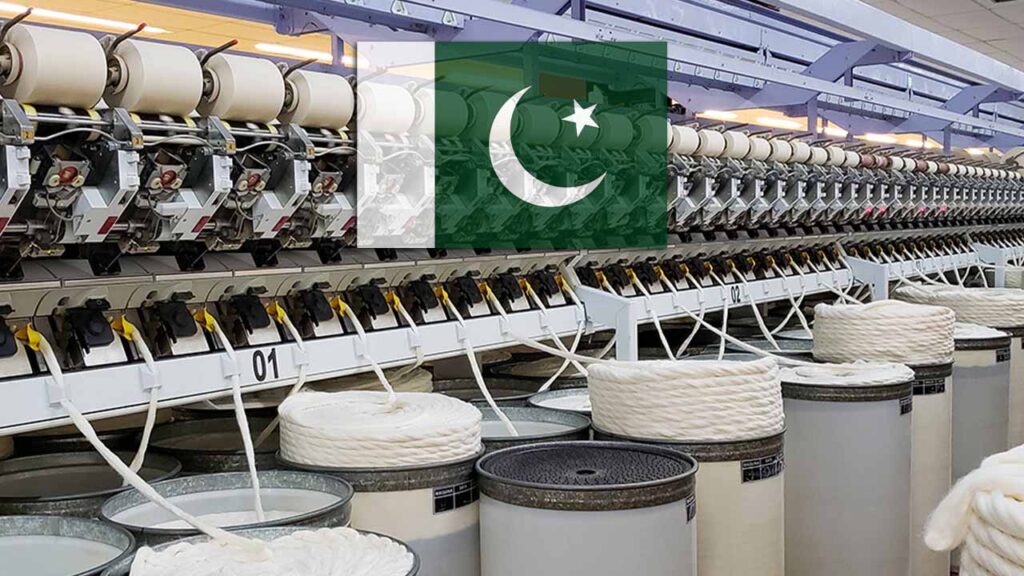- Web Desk
- 11 Hours ago
Pakistan’s major industries witness over 4% decline in output
-
- Web Desk
- Dec 16, 2023

WEB DESK: In a recent report released by the Pakistan Bureau of Statistics (PBS), the output of the Large Scale Manufacturing Industries (LSMI) experienced a notable decline of 4.08 per cent in October 2023 when compared to the same month in 2022.
Additionally, there was a two per cent decrease when compared with the preceding month, September 2023.
The data reveals an overall decline of 0.44 per cent in the LSMI output during the first four months (July–October) of the current fiscal year (2023–24) compared to the corresponding period in the previous year.
The provisional quantum index numbers of the large-scale manufacturing industries indicate a quantum index number (QIM) of 111.06 for October 2023 and 112.33 for the cumulative period of July–October 2023–24.
Developed based on the latest data provided by source agencies, the provisional quantum indices of LSMI for October 2023 utilise the base year 2015-16.
Analysing the contributing sectors, the main drivers of the overall -0.44 per cent growth are as follows: food (0.61 per cent), tobacco (-0.75 per cent), textiles (-3.12 per cent), garments (3.98 per cent), paper and board (-0.10 per cent), petroleum products (0.49 per cent), chemicals (0.22 per cent), pharmaceuticals (1.66 per cent), cement (0.42 per cent), iron and steel products (-0.10 per cent), electrical equipment (-0.50 per cent), automobiles (-1.51 per cent), and furniture (-1.84 per cent).
Comparing production figures for July–October 2023–24 with the same period in 2022–23, positive growth is observed in food, beverages, wearing apparel, coke and petroleum products, chemicals, fertilisers, pharmaceuticals, non-metallic mineral products, machinery and equipment, and other manufacturing (football).
However, there was a decline in tobacco, textiles, iron and steel products, electrical equipment, automobiles, other transport equipment, and furniture.
Sectors exhibiting growth during July-October 2023-24 compared to the previous fiscal year include food (5.11 per cent), beverages (0.25 per cent), wearing apparel (26.52 per cent), leather products (2.36 per cent), coke and petroleum products (7.55 per cent), chemicals (2.75 per cent), chemicals products (-5.92 per cent), fertilisers (8.91 per cent), pharmaceuticals (37.37 per cent), non-metallic mineral products (4.14 per cent), fabricated metal (1.10 per cent), machinery and equipment (48.21 per cent), and other manufacturing (12.46 per cent).
Conversely, sectors experiencing a decline during July–October 2023–24 compared to the same period in the previous fiscal year are tobacco (38.01 per cent), textiles (15.47 per cent), wood products (2.31 per cent), paper and board (3.96 per cent), iron and steel products (2.04 per cent), computers, electronics, and optical products (25.11 per cent), electrical equipment (13.29 per cent), automobiles (48.94 per cent), other transport equipment (12.55 per cent), and furniture (60.27 per cent).
The production of petroleum products witnessed an overall increase of 7.55 per cent during July–October 2023–24, with high-speed diesel showing a substantial growth of 14.80 per cent. Furnace oil and jet fuel oil experienced growth rates of 16.34 per cent and negative 13.02 per cent, respectively, during the same period.
Kerosene oil witnessed a marginal growth of 0.26 per cent in July–October 2023–24.
According to PBS data, cement production recorded a significant growth of 7.10 per cent in July–October 2023–24, reaching 14.071 million tonnes compared to 13.138 million tonnes in the corresponding period of 2022–23.
Read next: Lahore prepares for second round of artificial rain





